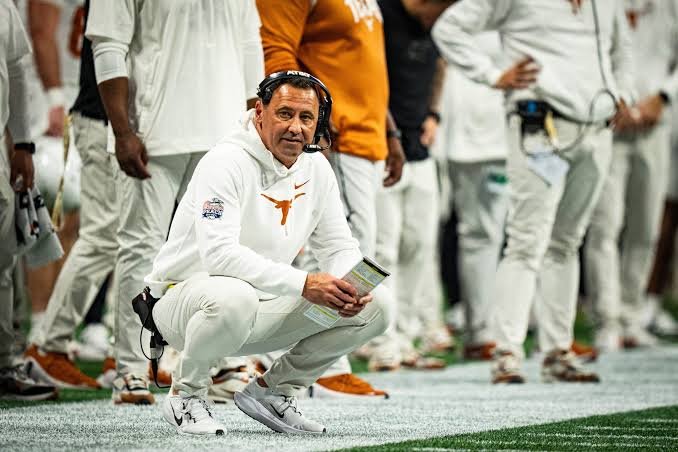“BREAKING: NCAA Poised to Shake Up College Sports with Revolutionary Eligibility Overhaul – Athletes Speak Out!”
BREAKING: NCAA Poised to Shake Up College Sports with Revolutionary Eligibility Overhaul – Athletes Speak Out!
In a move that could transform the landscape of college athletics, the NCAA is reportedly considering a groundbreaking overhaul of its eligibility rules that could empower student-athletes like never before. The proposed changes, which are currently in the discussion stage, promise to address long-standing criticisms about fairness, accessibility, and the treatment of athletes within the NCAA framework. As news of this potential reform spreads, athletes, coaches, and fans alike are weighing in on what this could mean for the future of college sports.
#### The Current State of NCAA Eligibility
The NCAA has faced significant scrutiny over its eligibility rules, particularly in how they impact student-athletes’ ability to navigate their academic and athletic careers. Currently, high school athletes must meet stringent requirements regarding GPA, standardized test scores, and amateur status to compete at the collegiate level. Critics argue that these regulations can be overly restrictive and fail to account for the diverse backgrounds and circumstances of many athletes.
In recent years, discussions surrounding athlete rights have intensified, fueled by movements advocating for fair compensation, mental health awareness, and a more holistic approach to the student-athlete experience. With the advent of Name, Image, and Likeness (NIL) deals, many have begun to question why the NCAA continues to enforce rigid eligibility standards that seem outdated in today’s context.
#### What the Overhaul Entails
While details remain sparse, sources close to the NCAA indicate that the proposed changes could focus on several key areas:
1. **Flexible Eligibility Standards**: The NCAA may introduce more flexible academic requirements, allowing a broader range of academic achievements—such as community service or vocational training—to count toward eligibility. The intent here is to recognize diverse paths to readiness for collegiate competition, especially for athletes from under-resourced backgrounds.
2. **Enhanced Support Systems**: The NCAA is considering implementing more robust support systems for athletes, including academic counseling, mental health resources, and life skills training. This approach aims to provide student-athletes with the tools they need to succeed both on and off the field.
3. **Increased Portal Accessibility**: With the transfer portal having revolutionized athlete mobility, the NCAA is exploring ways to streamline the process. Proposed changes include lifting restrictions on when and how often athletes can move between programs to encourage a more fluid competitive environment.
4. **Community Engagement Initiatives**: The organization is looking to improve its relationship with student-athletes by creating initiatives that promote community engagement and outreach. The hope is that these programs would empower athletes to become role models and leaders in their communities.
5. **Redefining Amateurism**: As the debate around amateurism evolves, the NCAA may make significant changes that redefine what it means to be a collegiate athlete. This could involve allowing athletes to pursue their own sponsorship deals, further blurring the lines between amateur and professional status.
#### Voices from the Field
As news of this potential eligibility overhaul circulates, athletes and coaches are eager to share their opinions. Many see this as a long-overdue change that could enhance opportunities for student-athletes.
“I think it’s a step in the right direction,” said Samantha Collins, a senior basketball player at a Division I university. “So many athletes come from different backgrounds and face challenges that aren’t necessarily reflected in current academic requirements. This can help level the playing field.”
Conversely, some former athletes are more skeptical. “While I appreciate the intention behind the changes, I wonder about the implementation,” remarked Jake Thompson, a former football player and current sports analyst. “It’s all good to talk about flexibility, but we need to ensure that academic standards are not compromised. Education should always come first.”
#### Broader Implications
If the NCAA follows through with these changes, it could have profound implications for the broader landscape of college sports. For one, colleges and universities could see an influx of talent from underrepresented communities, expanding the diversity of athlete backgrounds in various sports. As a result, schools may find that they not only strengthen their teams but also enrich the overall collegiate experience.
Moreover, these changes could spark similar conversations at differing levels of athletic competition, including high school leagues and community organizations, urging them to reconsider their own eligibility standards.
#### Challenges Ahead
Despite the excitement surrounding potential reforms, significant hurdles lie ahead. Navigating the interests of multiple stakeholders—athletes, universities, coaches, and policymakers—will be a balancing act for the NCAA. Furthermore, concerns about maintaining competitive integrity will need to be addressed.
Education institutions may also worry about ramifications tied to academic standards and how they align with their mission of fostering student growth and development. As such, thorough discussions and transparent communication will be critical in this transitional phase.
#### Conclusion
The NCAA’s consideration of substantial eligibility reform represents a pivotal moment in college sports. While the challenges and uncertainties that accompany these discussions are real, the potential benefits for student-athletes could be tremendous. Empowering athletes through new policies may foster not only athletic excellence but also social responsibility and academic achievement. As voices from all corners weigh in, the future of college sports may hinge on how the NCAA navigates this critical juncture.
As the discussions unfold and formal proposals emerge, one thing is clear: the landscape of college athletics is on the brink of a potential transformation that could enhance the experience of countless student-athletes for generations to come. The NCAA’s decision-making process will be closely watched, as it holds the potential to reshape not just eligibility rules, but the entire ethos of collegiate sports in America.




Post Comment